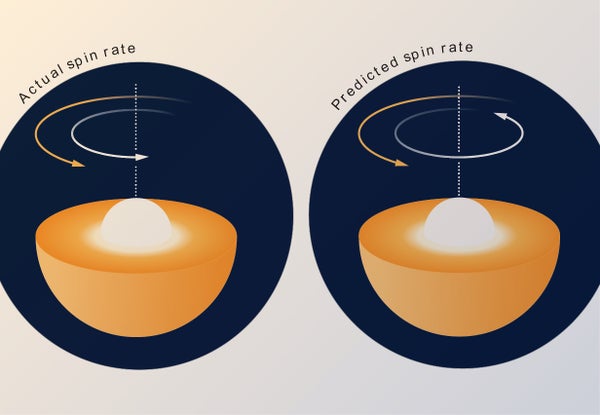Astronomers can measure how fast stars spin by observing “starquakes”—seismic tremors that are the equivalent of earthquakes on our planet. Yet these observations have posed a puzzle because many stars seem to be spinning slower than they should be. In a new study, researchers modeled how a magnetic field could grow in the internal layers of a star, dragging its rotation down.
Many stars' cores contract at some point, especially toward the ends of their lives when they have ceased fusing hydrogen in their centers. Usually this contraction would speed up a star's spin, just as figure skaters will twirl faster when they pull their arms in. Concentrating more mass in a smaller space will force an object to speed up to preserve angular momentum.
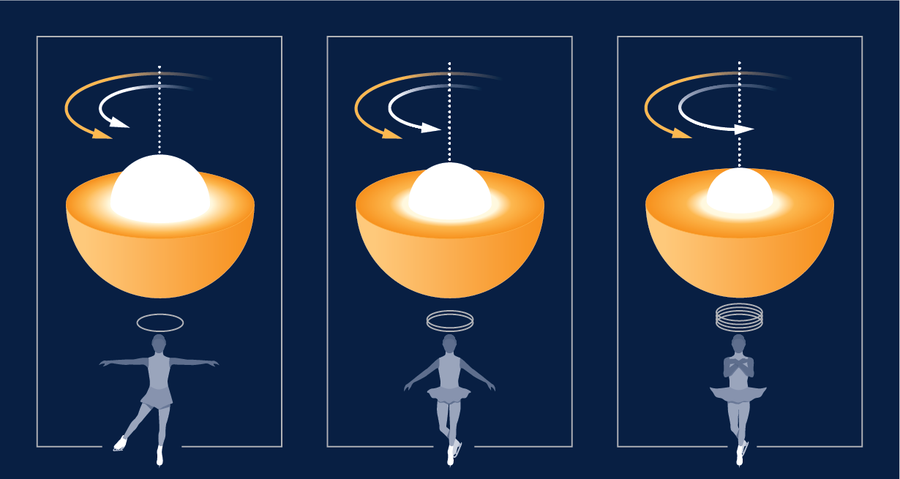
Credit: Lucy Reading-Ikkanda
On supporting science journalism
If you're enjoying this article, consider supporting our award-winning journalism by subscribing. By purchasing a subscription you are helping to ensure the future of impactful stories about the discoveries and ideas shaping our world today.
But the actual spin rate of many stars is slower than theory predicts, particularly in old stars.
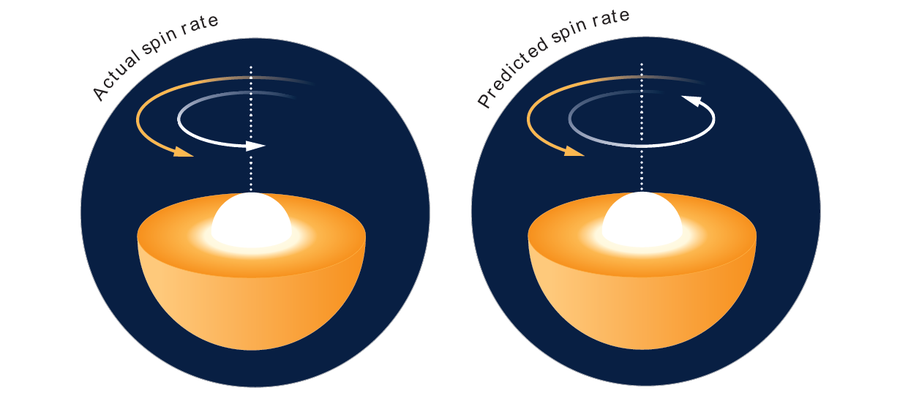
Credit: Lucy Reading-Ikkanda
In a new numerical model, researchers found that a small, random magnetic field inside the radiative layer of a star could be amplified by the plasma's flow. Once strong enough, this magnetic field spurs turbulence in the star's plasma, which in turn strengthens the magnetic field, which boosts the turbulence, and so on.

Credit: Lucy Reading-Ikkanda
This magnetic force exerts a powerful torque on the star's plasma, slowing its spin. “It causes a braking effect,” says Florence Marcotte, a scientist at Côte d'Azur University in France, who co-authored the study published in Science.
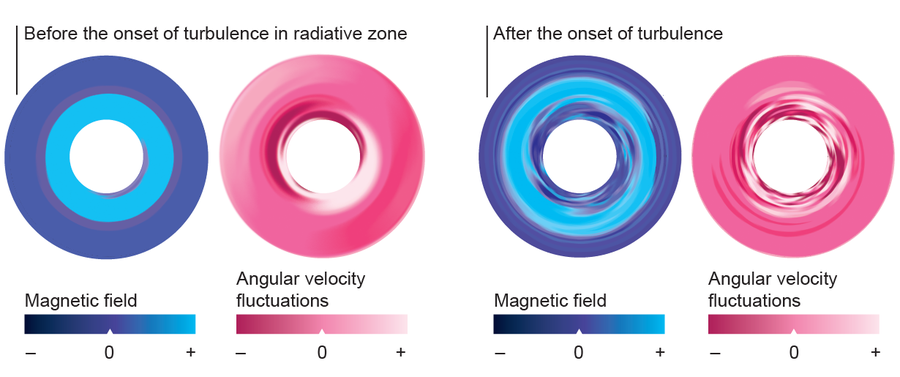
Credit: Lucy Reading-Ikkanda; Source: “Spin-Down by Dynamo Action in Simulated Radiative Stellar Layers,” by Ludovic Petitdemange, Florence Marcotte and Christophe Gissinger, in Science, Vol. 379; January 20, 2023 (reference)
This mechanism is compatible with observations of the spin rates of neutron stars and white dwarfs. It could possibly occur within the sun's radiative zone as well.
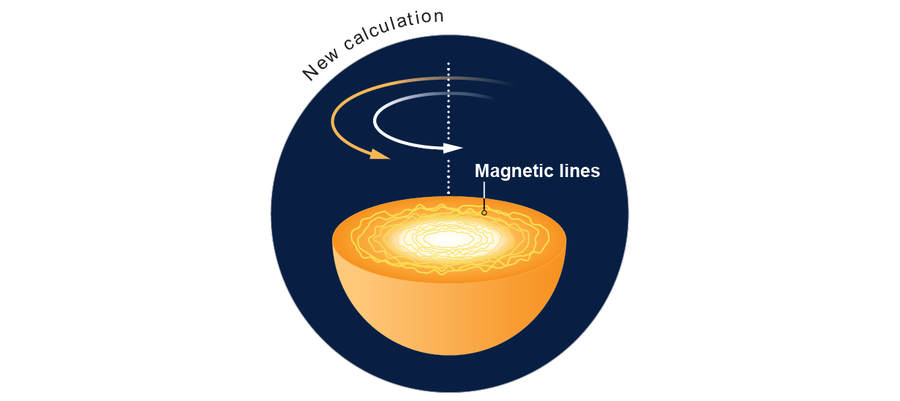
Credit: Lucy Reading-Ikkanda
